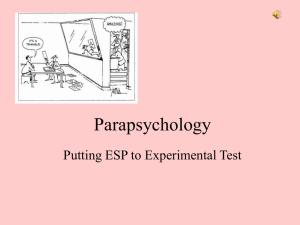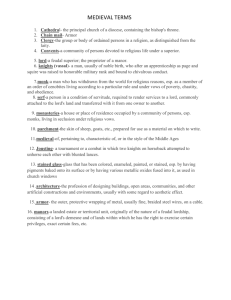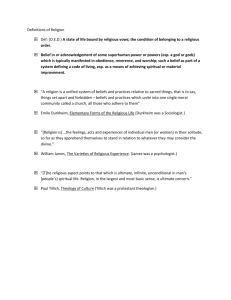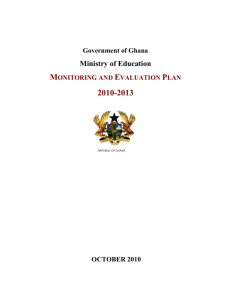Encapsulating Sclerosing Peritonitis is an Important cause of Death
advertisement
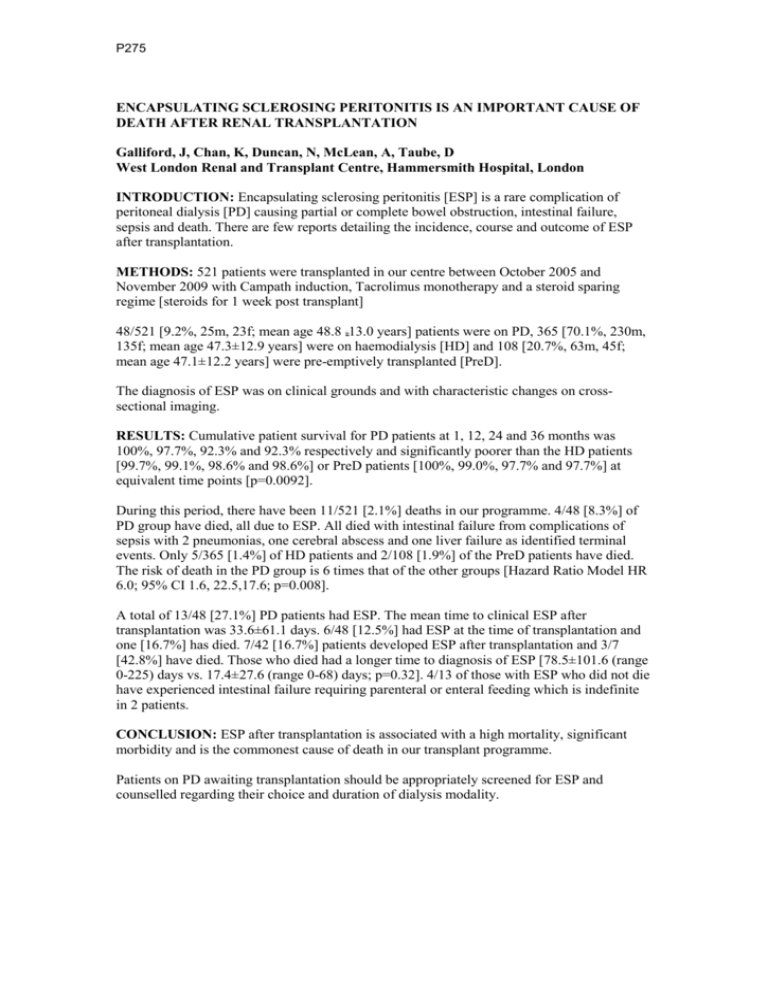
P275 ENCAPSULATING SCLEROSING PERITONITIS IS AN IMPORTANT CAUSE OF DEATH AFTER RENAL TRANSPLANTATION Galliford, J, Chan, K, Duncan, N, McLean, A, Taube, D West London Renal and Transplant Centre, Hammersmith Hospital, London INTRODUCTION: Encapsulating sclerosing peritonitis [ESP] is a rare complication of peritoneal dialysis [PD] causing partial or complete bowel obstruction, intestinal failure, sepsis and death. There are few reports detailing the incidence, course and outcome of ESP after transplantation. METHODS: 521 patients were transplanted in our centre between October 2005 and November 2009 with Campath induction, Tacrolimus monotherapy and a steroid sparing regime [steroids for 1 week post transplant] 48/521 [9.2%, 25m, 23f; mean age 48.8 13.0 years] patients were on PD, 365 [70.1%, 230m, 135f; mean age 47.3±12.9 years] were on haemodialysis [HD] and 108 [20.7%, 63m, 45f; mean age 47.1±12.2 years] were pre-emptively transplanted [PreD]. The diagnosis of ESP was on clinical grounds and with characteristic changes on crosssectional imaging. RESULTS: Cumulative patient survival for PD patients at 1, 12, 24 and 36 months was 100%, 97.7%, 92.3% and 92.3% respectively and significantly poorer than the HD patients [99.7%, 99.1%, 98.6% and 98.6%] or PreD patients [100%, 99.0%, 97.7% and 97.7%] at equivalent time points [p=0.0092]. During this period, there have been 11/521 [2.1%] deaths in our programme. 4/48 [8.3%] of PD group have died, all due to ESP. All died with intestinal failure from complications of sepsis with 2 pneumonias, one cerebral abscess and one liver failure as identified terminal events. Only 5/365 [1.4%] of HD patients and 2/108 [1.9%] of the PreD patients have died. The risk of death in the PD group is 6 times that of the other groups [Hazard Ratio Model HR 6.0; 95% CI 1.6, 22.5,17.6; p=0.008]. A total of 13/48 [27.1%] PD patients had ESP. The mean time to clinical ESP after transplantation was 33.6±61.1 days. 6/48 [12.5%] had ESP at the time of transplantation and one [16.7%] has died. 7/42 [16.7%] patients developed ESP after transplantation and 3/7 [42.8%] have died. Those who died had a longer time to diagnosis of ESP [78.5±101.6 (range 0-225) days vs. 17.4±27.6 (range 0-68) days; p=0.32]. 4/13 of those with ESP who did not die have experienced intestinal failure requiring parenteral or enteral feeding which is indefinite in 2 patients. CONCLUSION: ESP after transplantation is associated with a high mortality, significant morbidity and is the commonest cause of death in our transplant programme. Patients on PD awaiting transplantation should be appropriately screened for ESP and counselled regarding their choice and duration of dialysis modality.


